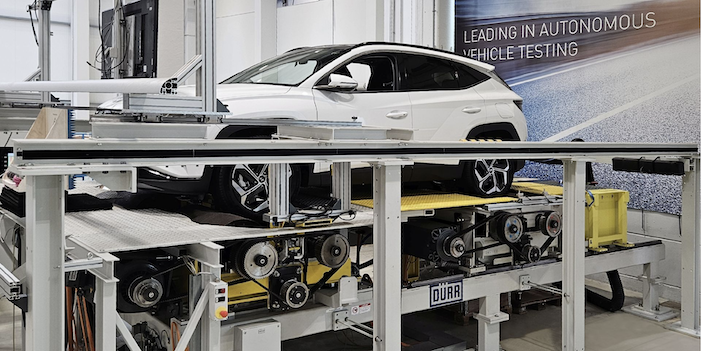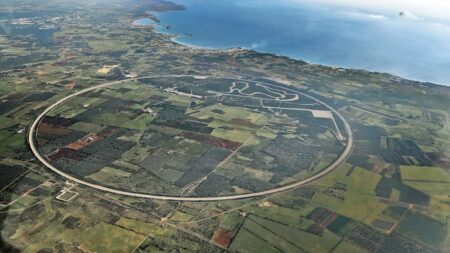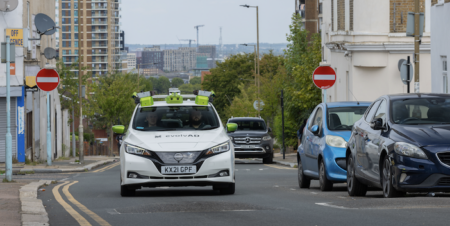Road safety is a key consideration for future mobility, especially with automated and autonomous vehicles. Ensuring the continued functionality of advanced driver assistance systems (ADAS) and autonomous driving (AD) features is critical for long-term vehicle safety and performance. Therefore, manufacturers of vehicles equipped with these features require certification, either from a third party, an authority, or by self-certification.
A useful tool in assessing safety is vehicle-in-the-loop (VIL) testing, which can validate the correct operation of all ADAS/AD functions in the end-of-line (EOL) and ensure conformity of production (COP) before a vehicle leaves the factory. Maintaining proper functionality throughout a vehicle’s lifespan also requires additional control measures during periodical technical inspection (PTI).
Simulating various driving scenarios
To address these additional requirements in the EOL and PTI process, Dürr and Rohde & Schwarz have initiated a joint project incorporating Dürr’s patented ‘x-road’ curve multi-function roll-test stand and Rohde & Schwarz’s new RadEsT radar target simulator, with the CARLA open-source simulation platform. The combination creates a virtual environment specifically for the camera and radar sensors installed in the test vehicle, allowing for the OTA simulation of different inspection scenarios without touching the vehicle.
These scenarios include critical situations such as unintended lane departures and other vehicles braking suddenly or switching lanes directly in front of the test vehicle. The test vehicle must react promptly to changes in the VIL simulation and, if necessary, trigger the automated lane-keeping systems (ALKS) or advanced emergency braking systems (AEBS), for example, to pass inspection.
Patented technology for ultimate versatility
According to Dürr, the 4WD x-road curve allows for unrestricted driving with steering movements, facilitating cornering manoeuvres without altering the test vehicle. Laser measurement technology recognises the front wheels’ position and steering angle, while swivelling front double roller units automatically adjust for any angular difference to the driving direction. This ensures the vehicle remains centred on the test stand even at high speeds, regardless of the steering wheel’s position, and without the need for vehicle fixation, thus minimising cycle times.
Resilient processes and precise results
Rohde & Schwarz says that its compact and lightweight RadEsT radar target simulator is resilient to external factors, ensuring consistent performance in production and workshop environments. Its ability to provide precise and repeatable measurements makes it a useful tool for conducting accurate assessments in real-world conditions.
Easy to use test scenario generation
Finally, the CARLA open-source tool offers vehicle manufacturers or PTI organisations maximum flexibility with potential for scenario selection. The recently announced upgrade of the CARLA simulator to Unreal Engine 5 is expected to enhance modelling, simulation realism, and performance, particularly for over-the-air camera simulation via monitors.
The companies says that the combination of technologies enables the functionality of automated and autonomous vehicles to be cost-effectively evaluated to ensure proper operation in production and throughout the complete vehicle’s lifespan.





